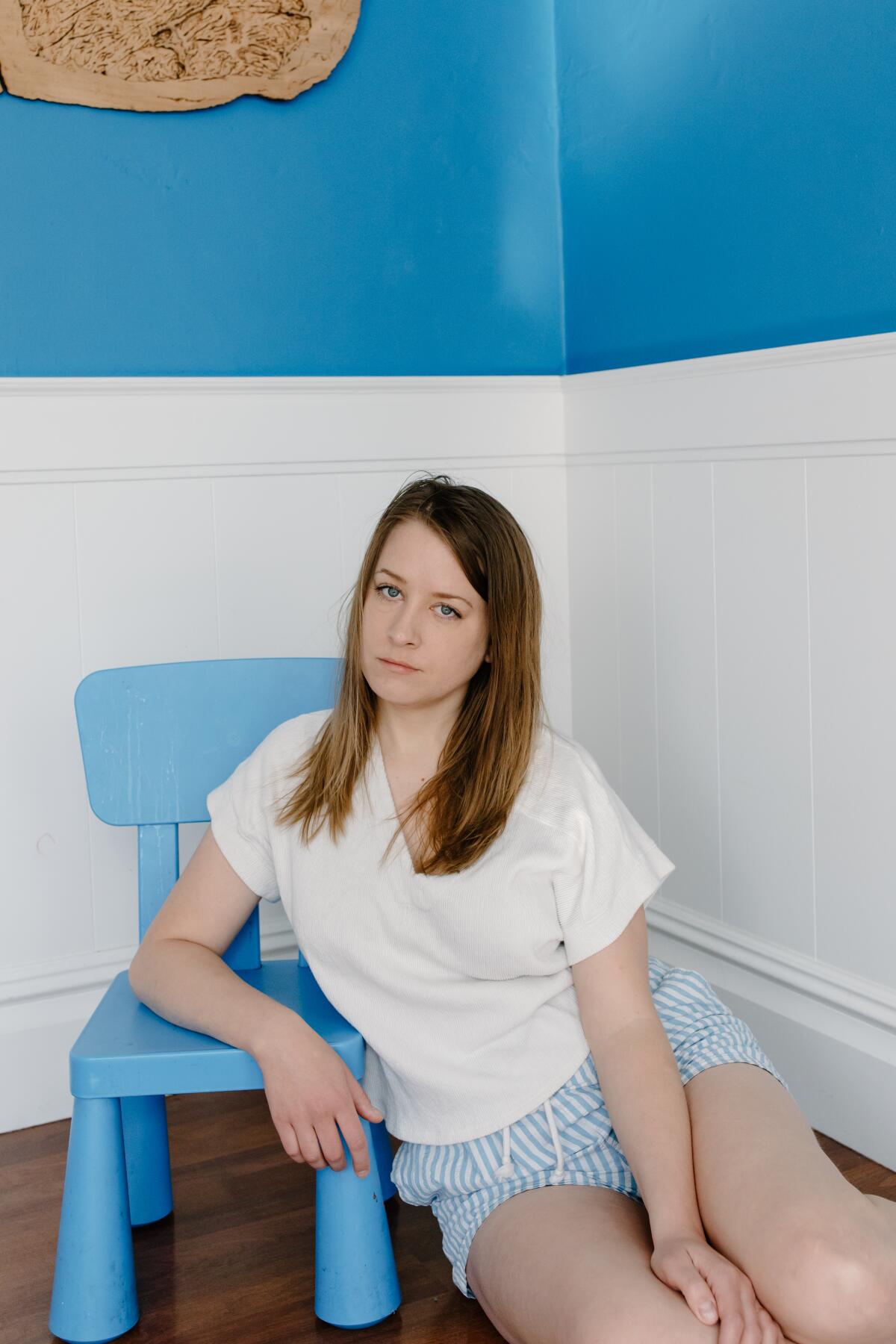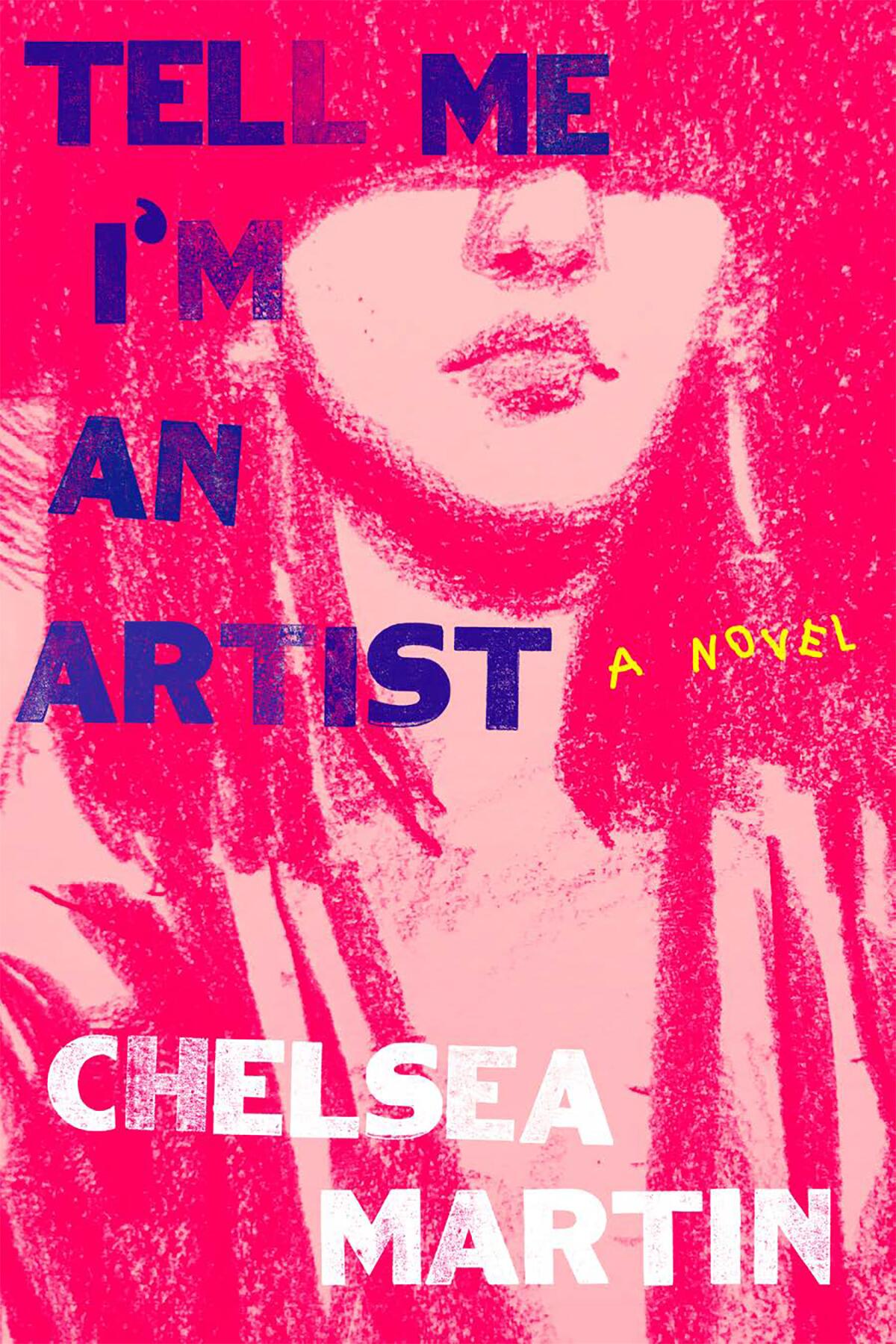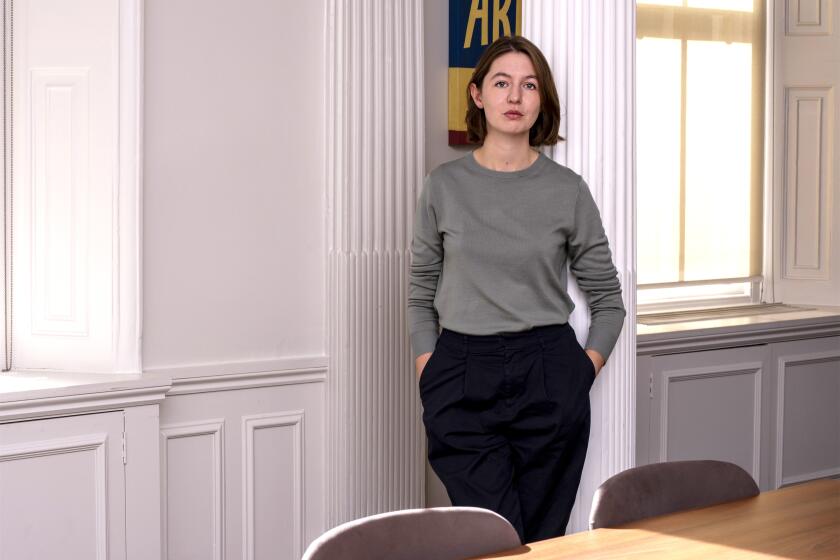Review: A young debut novelist, unlike Sally Rooney, tells the truth about art and money

On the Shelf
Tell Me I'm an Artist
By Chelsea Martin
Soft Skull: 368 ages, $27
If you buy books linked on our site, The Times may earn a commission from Bookshop.org, whose fees support independent bookstores.
Joey has a problem. She’s decided to make a film about Wes Anderson’s “Rushmore” for her “self-portrait” class in art school. But she’s never seen the movie. It could be a way “to take ownership of unknowable things,” Joey thinks. The real problem is, Joey’s not sure what art is. And if she’s not sure what art is, how can she be an artist?
In addition to being the author of the essay collection “Caca Dolce” and the novella “Mickey,” Chelsea Martin is an illustrator and comic artist. “Tell Me I’m an Artist,” released this month, is her first novel. It is, perhaps, easy to draw parallels between Joey and Martin. You could toss off a description of the book as “the portrait of the artist as a young woman,” but life is short and that’s awfully reductive. Martin’s book is too complicated, too messy, too specifically entangled with the sheer impossibility of art for art’s sake under capitalism, for that kind of catalog copy to apply.
“Tell Me I’m an Artist” is jammed with dialogue, female friendships, family dramas and Internet search results. (“Lee Krasner,” alongside “Pop-Tart nutritional value.”) Readers might find something of an even more youthful Sally Rooney in these things. But their patience will be tested. As Joey struggles over 350-plus pages to complete (or even begin) her “self-portrait” on not having seen “Rushmore,” the possibilities pile up, and not in a positive way. It’s a feather in Martin’s cap that her humor and nuance keep the reader going.
Rooney’s ballyhooed third novel, “Beautiful World, Where Are You,” has it out over whether Sally Rooney deserves to write bestselling fiction.
There is more to this “portrait of the artist” than meets the eye, luckily. Superseding the struggle to complete a project premised on the unknown is the struggle simply to survive. Joey’s time in art school is complicated by the knowledge that at any moment her life could fall apart. She takes out student loans to pay her rent, and her mother and sister are constantly hounding her for money. At one point, Joey gives her mother $800 of her loan disbursement to bail her sister, a drug addict with a young son, out of jail.

Last June, Naomi Kanakia wrote a fascinating article for Literary Hub headlined, “If They Want to Be Published, Writers Can’t Be Honest About Money.” Kanakia cites Rooney as “a Marxist writer whose characters drift through life from success to success and never worry about money, grounded in feelings of insecurity about manners, rather than concrete issues involving basic human needs (food, shelter, health, autonomy).” Though Martin’s novel shows the influence of Rooney’s brilliant ear for dialogue, both online and IRL, “Tell Me I’m an Artist” is a direct rebuttal to the notion that novelists must ignore precarity if they want to be marketable.
“Tell Me I’m an Artist” is a novel written for Gen-Z, a cohort that also has never seen “Rushmore” but knows a great deal about marketing. Joey’s story unfolds through short vignettes. Some pages are only a few lines long. Others include lists and venn diagrams. There are no chapters. There is no “traditional” plot structure. But what does “traditional,” mean anyway? It’s a word without meaning. Martin’s approach mimics Joey’s, and this is intentional. Like a TikTok, it says too much and too little at the same time.
The reigning poet of Twitter, also a memoirist, aims to capture the emptiness of social media, and then transcend it, in “No One Is Talking About This.”
Thematically, at least, Martin shares much with Lynn Steger Strong, whose novel “Want” explores the same shameful stress of late capitalism. While trying to stay in art school in San Francisco, a city of astronomical rents, Joey is also straining against the expectations of being a daughter and a sister. Her situation is presented in deep contrast to her friend Suz, who has supportive (and more important, wealthy) parents. While Suz agonizes over whether or not she’s a token acceptance to an artist residency because she’s female, Joey quietly worries whether or not her sister may be dead.
Joey’s relationship (or lack thereof) with her sister Jenny is one of the most sensitively rendered parts of the book. Jenny’s appearances act as signposts along the rutted cowpath of Joey’s second-guessing and hand-wringing over her identity as an artist. Joey reflects on a moment in their childhood when Jenny draws a picture of Joey and her friend Landon. “It was the first piece of art that made me feel something,” she says. Joey is the artist of this story, not Jenny. But it’s brutally obvious that Joey believes her sister’s life of teenage motherhood, drug addiction and incarceration could have just as easily been hers.
Book reviewing is a sobering undertaking, because often we are tempted to evaluate books based on what we’d like them to be, rather than what they are. If Martin has set out to complete a “self-portrait” of what it means to be a young person today in graduate school with artistic aspirations, she has done so. Could “Tell Me I’m an Artist” be shorter? It doesn’t really matter. Do we need our novels to expose these sleek lies we’ve been fed about art-making? Only their readers can say.
In Lynn Steger Strong’s ‘Want,’ a writer, teacher and mother faces up to her own privilege and the precariousness of her middle-class life.
Ferri’s most recent book is “Silent Cities: New York.”
More to Read
Sign up for our Book Club newsletter
Get the latest news, events and more from the Los Angeles Times Book Club, and help us get L.A. reading and talking.
You may occasionally receive promotional content from the Los Angeles Times.








